Everything about Silvi Alta
Silvi Alta or Silvi Paese is the historic center of the city of Silvi, which includes Silvi Marina, Paese, Pianacce, and other hamlets.
It is located in the province of Teramo, very close to the city of Pescara.
Silvi Alta, more specifically, is a village situated on a structure of arches, on the very first hill from which you have a breathtaking view of the Central Adriatic, from Monte Conero (Ancona) to Vasto (Chieti).
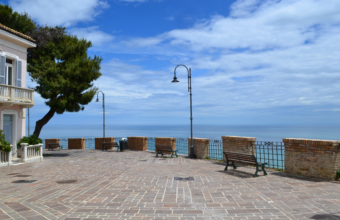
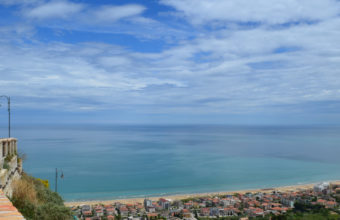
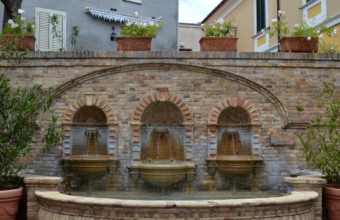

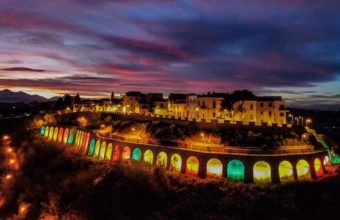
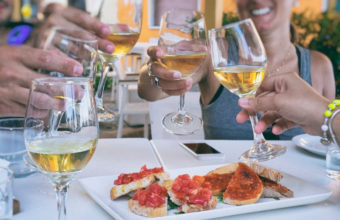
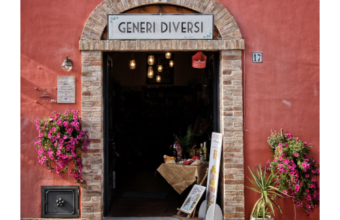
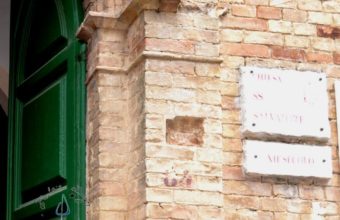
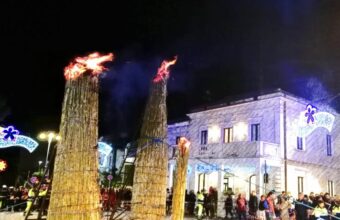
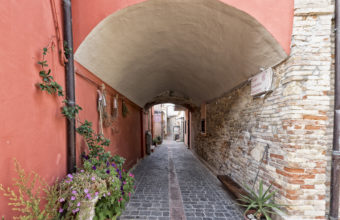
the history of silvi alta and silvi marina
The name Silvi derives from the god Silvanus, the Italic deity of the woods. Indeed, it seems that in the location where Silvi Alta (Silvi Paese) stands today, there was once an ancient temple dedicated to this deity. The history, therefore, is very ancient. The events of Silvi Alta have always been intertwined with broader historical events, dating back to the very earliest centuries of its foundation.
In the pre-Roman era, Silvi was likely the location of the commercial port for the Picene city of Hatria (modern-day Atri), which already represented a thriving reality on the Italian peninsula.
After the Social Wars, Atri became a Roman colony, and Silvi continued to serve the city. During this period, the commercial port flourished, particularly in the trade of wines and as a strategic point for accessing the Via Salara, which connected Porto d’Ascoli and Rome.
In the Roman era, the territory experienced incredible prosperity, to the extent that Hatria gave rise to the gens Elia, from which the emperor Hadrian descended. According to some interpretations, even the name of our Adriatic Sea might derive from Hatria.
Since then, the location where Silvi Alta now stands, halfway between Silvi Marina and Atri, became a lookout point to protect the powerful colony.
With the fall of the empire, we have little information about Silvi Alta. What we know for certain is that already in the early Middle Ages, there was a village on the hill known as Castrum Silvae or Torre Belfiore. The church of S.S. Salvatore, which still serves the community of Silvi Paese, was built in 1100 AD.
What prompted the sailors of the port to seek refuge on a hill? Most likely, it was the constant pirate attacks from populations coming from Turkey. The legend of the Patron Saint of Silvi refers precisely to these episodes, which we will tell you about later.
In the Middle Ages, still connected to Atri, Silvi Alta was under the dominion of the French kings. In 1275, King Charles of Anjou passed through these places, leaving an inscription that can still be read on the side facade of the church of Ss. Salvatore, near the Monumental Arch that marked the entrance to the village.
In the modern era, Silvi, like the entire Abruzzo region, came under Spanish rule. On the one hand, it was a period of great prosperity because the city of Atri had become the city of the Dukes of Acquaviva, a powerful family that, between 1500 and 1600, even managed to produce the General of the Jesuits, Claudio Acquaviva. On the other hand, the village of Silvi experienced a real demographic crisis caused by continuous pirate sieges and epidemics.
It’s worth noting that at the end of the 15th century, to counter depopulation, King Ferdinand the Catholic of Spain ordered the repopulation of Silvi by welcoming Christian refugees from Dulcigno, a city in present-day Albania, conquered by the Ottomans. For a long time, the inhabitants of Silvi Paese were also called Dulcignotti. We will return to this story later.
Under Spanish rule, the Torre Cerrano was also built, now the headquarters of the Marine Protected Area. The tower is part of a series of coastal fortifications to protect the interior from sea invasions. Torre Cerrano, in particular, had the task of signaling the arrival of enemies to Silvi Paese, which in turn alerted Atri and initiated defense outposts.
The 1700s were marked by particularly bloody sieges by the Turks, such as that of 1714. But there was also an early entrepreneurial activity initiated by the Baron of Forcella, who opened the first licorice factory. This activity marked the commercial life of Atri and Silvi for a long time, where Saila was founded in the early 1900s.
The first impulses to break free from the control of Atri begin, and this is fully realized only in 1806 with the establishment of the Kingdom of Italy by Napoleon and the abolition of feudal privileges. A period of cultural and economic flourishing begins, and for centuries, Silvi attracts distinguished guests.
Among them, Gabriele D’Annunzio frequents the casinos and fashionable venues that begin to flourish between Silvi Paese and the coast. The strong appeal of Silvi towards upscale tourism continues for almost a century. Meanwhile, in Silvi Marina, the first vacation homes are built: they are elegant Liberty-style villas, intended for affluent families and their entourage. Bistros, casinos, hotels, dance halls, and cultural circles are born, attracting intellectuals from Abruzzo and beyond. The village of Silvi Alta, on the other hand, takes on its characterization as a seaside village: there, fishing families continue to live, while the wealthy families of Atri and Silvarole move to the coast, de facto founding Silvi Marina.
In 1937, entrepreneurs Menozzi and Barabaschi founded Saila, the candy factory that is still a famous and globally recognized brand. The production headquarters is still located in the center of Silvi Marina. In winter, on humid stormy days, the city fills with the scent of mint and licorice.
This success continues until the Second World War when the Abruzzo coast falls into the hands of the Germans, many of whom are heading to the bloody Sangro front. The Battle of Ortona, a coastal city about 40 minutes from Silvi Marina, is also famous as the Stalingrad of Italy, so fierce was the fighting.
During this period, the bombings that hit the coast (the signs are still visible in Pescara) spare not even Silvi Alta. The presence of cellars and underground structures, however, prompts many coastal inhabitants to return to the village, seeking shelter from the bombings within these underground spaces.
By the end of the war, almost 6,000 residents of Silvi Alta are evacuated to Atri, which also welcomes populations from Chieti and Pescara.
After the war, the situation gradually returns to normal. Until the 1970s, Silvi is a preferred nightlife destination for the entire Adriatic coast, attracting famous singers, actors, young people, and “Gentlemen” to its venues. This inclination earns it the nickname “Pearl of the Adriatic.”
The term “Gentlemen” is how, in the post-war period, the residents of Silvi, often fishermen or not wealthy, refer to vacationers who come to spend the summer in their homes. The people of Silvi abandon their residences to cram into garages and basements, thus earning a precious sum from summer rentals.
The tourist vocation that characterizes Silvi Marina begins, and it never abandons it. The village of Silvi Alta, on the other hand, experiences a depopulation phase and is forgotten by tourist maps.
Meanwhile, the type of beach tourism in Silvi shifts towards family tourism, leveraging the shallow and sandy waters, the clean Blue Flag water, and the presence of the Torre del Cerrano Marine Protected Area. From the 2000s onwards, the gradual rebirth of Silvi Paese also begins, becoming a privileged location for fairs and summer festivals.
Today, Silvi Paese is once again the driving force of tourism in Silvi. It attracts visitors from all over, captivated by the marvelous views, the convenient location to reach the sea, mountains, and villages. In the summer evenings, many establishments are open to savor local specialties or street food, and tourists and locals crowd the viewpoint. You often find markets, musical performances, and events that now make the village of Silvi Alta one of the best tourist attractions in the area.
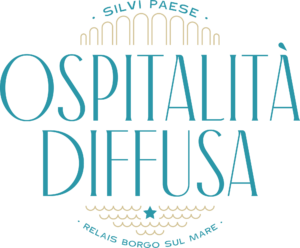
what to do in silvi alta and the surroundings
Silvi Alta today is a place that attracts Italian and foreign tourists, ecotourists, couples, young people, and families. A diverse audience comes to the village of Silvi to:
- Admire the incredible panorama from the Silvi Alta loggia, where you can overlook the Adriatic coast from Monte Conero to Vasto.
- Enjoy food or drinks at one of the many establishments open during the summer evenings.
- Explore markets, small theaters, musical performances, and events.
- Reach the nearby beach of Silvi Marina or the Torre del Cerrano Marine Protected Area.
- Discover the area through guided tours of Silvi Paese and its surroundings.
But Silvi Alta is also an excellent starting point to visit other beauties of Abruzzo, thanks to its proximity to the highway exit and the railway station:
- Gran Sasso d’Italia;
- Abruzzo, Lazio e Molise National Park;
- Majella National Park;
- Gran Sasso and Monti della Laga National Park;
- Numerous regional parks and nature reserves;
- Torre del Cerrano Marine Protected Area;
- Art cities such as Atri or Penne;
- Mountain villages with unparalleled artisanal artistic tradition: Pescocostanzo, Scanno, Castel del Monte;
- Timeless villages: Santo Stefano di Sessanio, Campo di Giove, but also the modern Aielli, home to Borgo Universo adorned with murals;
- Castles and historical landmarks: Rocca Calascio, Rocca Scalegna, Civitella del Tronto;
- The nearby Pescara with its nightlife venues and shopping stores;
- The Trabocchi Coast, south of Abruzzo;
- Seaside villages “siblings” of Silvi Alta: Mutignano, Montepagano, Città Sant’Angelo;
- The surrounding hills, rich in agritourisms to try incredible local products;
- Abruzzese wineries, producing excellent wines.
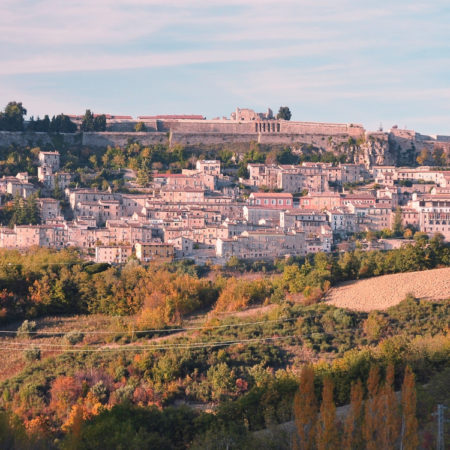
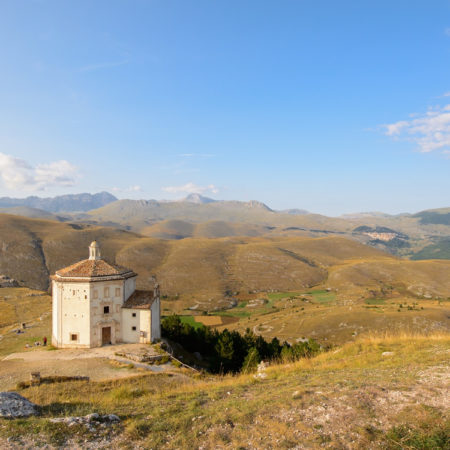
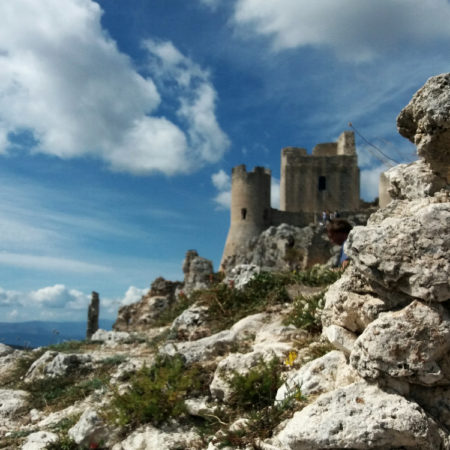
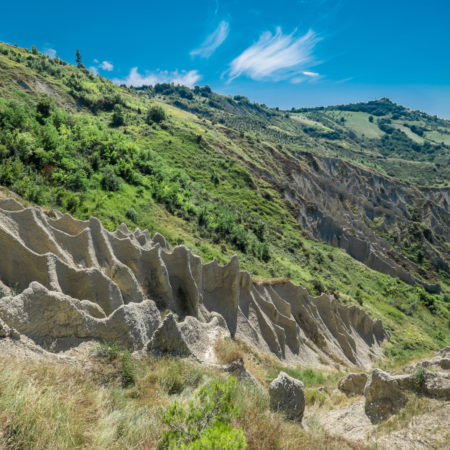
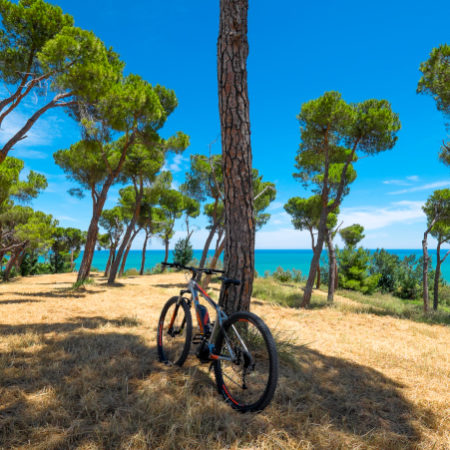
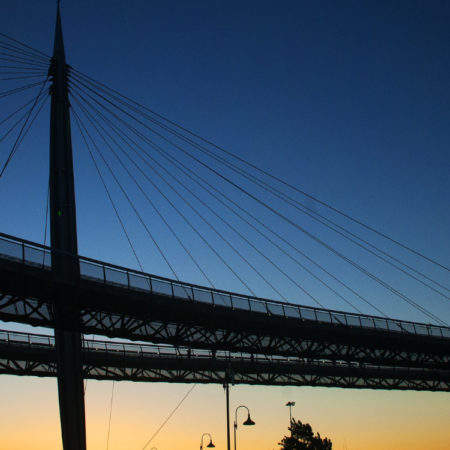
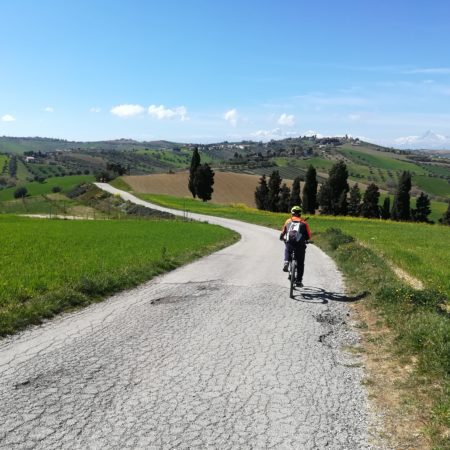
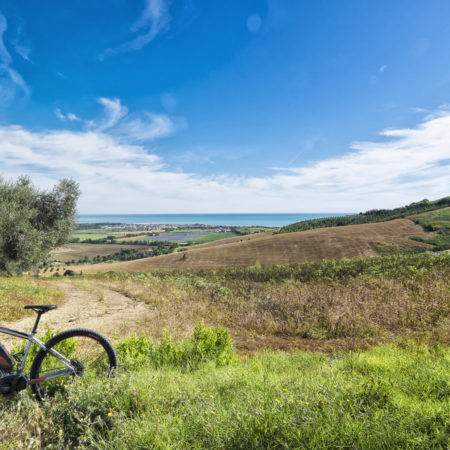
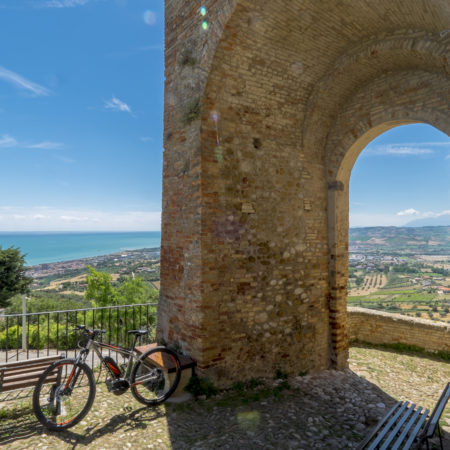
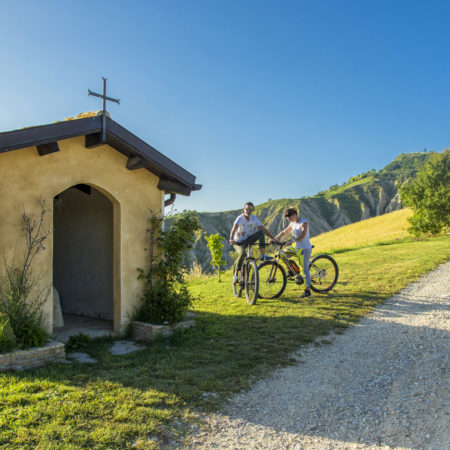
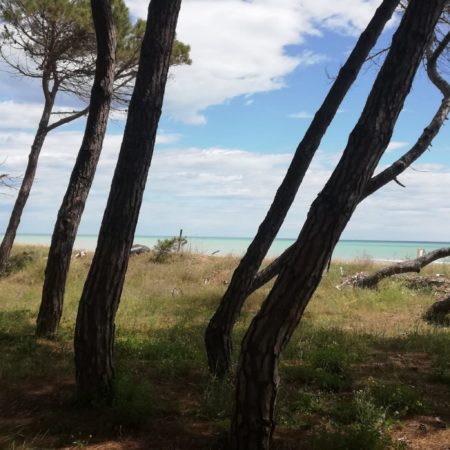
Authentic experiences in our Widespread Hospitality in Silvi
If you want to have an even more unique and authentic experience in Silvi Alta, choose one of our On-demand Services:
- Wine or Whiskey tasting;
- Fresh pasta cooking class;
- Jarred Tomato lab.
food and drink in silvi paese






The seafaring culture characterizes the typical Silvarole cuisine, which, however, is also enriched by the Abruzzese peasant tradition.
Among the dishes not to be missed, therefore, are numerous fish-based dishes. Among these, the standout is the “brodetto,” a soup typically prepared by fishermen. Also worth trying are pasta with Adriatic anchovy sauce, fried fish, and sea snails referred to as “li bbummalitte” here.
Then there are the typical snacks of the fishermen, often cooked in families but hard to find in restaurants: fried salted anchovies threaded into fried “crusco” peppers; “pane galluccio,” baked with garlic, oil, rosemary, and dried peppers.
For those who do not enjoy fish, on the other hand, the choice of meat dishes is very varied and reflects the influence of the great culinary culture of Teramo. Here is a (non-exhaustive) list of our favorite dishes:
- “Pasta alla chitarra” with small meatballs in sauce and “timballo alla teramana” are always present on the festive table in Silvi.
- “Scrippelle mbusse,” rolled crepes filled with Parmesan cheese, immersed in meat broth.
- “Pipindune e ove,” fried peppers with eggs.
- “Agnello cace e ove,” typical of the Easter tradition, lamb with cheese and eggs.
- “Pallotte cace e ove,” bread, cheese, and egg meatballs, fried and immersed in sauce.
- “Arrosticini,” emblematic of Abruzzo.
- Fried pecorino cheese.
- “Ventricina teramana,” a spicy and flavorful spreadable salami (not to be confused with the Ventricina vastese, which is a delicious spicy salami).
- “Pasta allo sparone,” a kind of cannelloni boiled wrapped in a cloth, known as “sparone.”
- “Pizza dogge,” the quintessential festive cake, made with sponge cake soaked in alchermes and filled with custard and chocolate cream.
- “Scrucchjata d’uva,” a jam made from Montepulciano black grapes, without sugar, used in numerous traditional sweets.
- “Virtù,” the typical Teramo soup for May 1st, made with pasta, legumes, and vegetables: an ancient recipe to consume all the winter leftovers without wasting food.
- “Ciabbotto,” a stew of potatoes, peppers, onions, eggplants, and zucchini, cooked together for a long time.
The winemaking tradition in Abruzzo is incredible, with wineries that represent excellence on a global level. Silvi Alta is strategically located, quite central in Abruzzo, making it an excellent starting point for those interested in wine tourism.
The typical wines of the region include:
- Red wine: Montepulciano d’Abruzzo;
- Rosé wine: Cerasuolo d’Abruzzo;
- White wines: Passerina, Pecorino, Coccociola.
The tradition of Abruzzese liqueurs is equally excellent, featuring:
- Gentian liqueur;
- Ratafia made from sour cherries;
- Centerbe, an extremely alcoholic herbal liqueur.
something you should know about silvi alta
Ora ti raccontiamo alcune curiosità incredibili su Silvi Alta. Alcune le abbiamo già menzionate
Now, let me share some incredible curiosities about Silvi Alta. Some of them have already been mentioned in the section about the history of Silvi.
The Legend of San Leone and the Feast of Ciancialone
The legend of the Patron Saint of Silvi is set during the Turkish invasions. As the invaders approached the village, a young man named Leone wielded a torch and a cross to defend the city, heading towards the enemies.
The torch became increasingly radiant, scaring off the Turkish soldiers. According to some versions of the legend, they fled without fighting. According to other versions, they thought the village had already been set on fire.
Either way, with his courage, Leone saved Silvi Alta from yet another siege. According to another legend, during a terrible earthquake that shook Silvi in the 18th century, the village priest prayed for the tremors to cease by invoking the Lord with the relic of San Leone.
In his honor, on May 29th, the patronal feast of San Leone is celebrated, with the traditional lighting of the Ciancialone. It consists of a set of reeds that build a huge torch, which can reach almost 30 meters, lit in the center of Silvi Paese’s square throughout the night. The Ciancialone precisely recalls the torch with which the Patron repelled the Turks.
Cervantes, Don Quixote, and the beautiful Dulcinea
A local historian has proposed something very interesting. During the time of the Dukes of Acquaviva, the Spanish writer Cervantes, author of Don Quixote, was in Atri in the service of one of the dukes, who would have inspired some of the characters in the work.
The figure of the beautiful Dulcinea, loved by Don Quixote, could be inspired by a girl from Silvi Alta. The idea arises from the presence of the writer in our territory and the similarity between the name Dulcinea and the word Dulcignotta, which would have been used to refer to a woman from Silvi at the time, after the village was repopulated by refugees from Dulcigno.
The Secret Cave
A third curiosity we want to share is about the M91 tavern – The Secret Cave. It’s a place that we decided not to advertise, where guests can, upon request, book a wine or whiskey tasting in a refined and warm, yet homely, environment.
Can you find it among the alleys of Silvi Alta?





